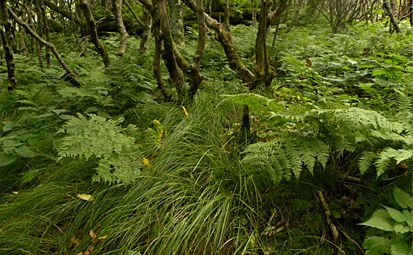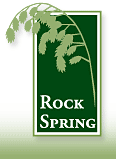
 Sedges and Rushes
Sedges and Rushes
Sedges and rushes are similar to grasses but they actually belong to a separate family of plants called Cyperaceae (sedges) and Juncaeae (rushes). Cyperaceae is one of the largest family of plants with over 70 genera and 4,000 species worldwide. Many of the sedges tolerate extreme conditions, such high water in wetlands, low light in forests and woodlands, or unusual soil and are useful where other vegetation does not thrive. Most of the rushes are evergreen, wetland plants that thrive in wet habitats. Both groups of plants are important components of most natural habitats in the Southeast.
Wetland & Riparian
Wetlands and riparian areas are special habitats that require plants that are adapted to their specific characteristics. Wetlands such as swamps, marshes, bogs, and fens are flooded with water for extended periods of time. The hydrologic regime has a significant impact on the species that inhabit these areas. See the Resources page for information on wetlands. Likewise, riparian habitats, the areas along rivers and streams, have characteristics such as unique topography and a periodic flooding regime that limit the species that can successfully inhabit them. See the Resources page for information on riparian areas. We grow several wetland and riparian species for southeastern North America. Please call us if you have questions regarding species selection, installation, culture, etc.
